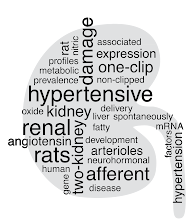Having properly started my residency in anaesthesiology and intensive care medicine I have started looking for textbooks to help me.
In my view medicine has four important levels of knowledge: basic science, clinical practice, evidence based medicine, and epidemiology. Clinical practice will be the focus of your general textbook, but each level deserves its own book because the general textbooks are never good enough. For basic science and EBM the demand for detail and precision is much greater, and epidemiology is often ignored completely.
What follows will be a number of book-reviews of books that I have read, which are useful for anaesthesiology residents. If you have any suggestions, please leave a comment.
So far I have these three general anaesthesia books, which I will say something about.
Morgan & Mikhail's Clinical Anesthesiology (2013, 5 ed. edited by John F. Butterworth IV, David C. Mackey and John D. Wasnick), which is actually available in electronic form through the university library. It's an easy read, unless you are easily annoyed by typos and trivial errors. Instead of references it has suggested reading, which is a mix of reviews, book-chapters and original research. To say that it lacks depth is to state the obvious, but it seems to reflect the state of clinical anaesthesia fairly well.
With that I mean that there is sufficiently scarce evidence that the personal opinion and experience of the individual mentor makes huge differences in how and what you are taught. It is a bit annoying, because you spend a couple of weeks with one specialist behind you, until they are confident to let you run things. Then you change to the next specialist, and they basically think you are insane.
Anestesi (2005, 2 ed. edited by Matts Halldin and Sten Lindahl), a swedish textbook, which is helpful for some practices that are more specifically swedish, and it is generally a good book. Not very thick though, so rather basic.
Anestesikompendium (2004, 8 ed. edited by Rainer Dörenberg), the pocket reference produced by the department in Uppsala. It's brilliant for working in Uppsala for obvious reasons, and includes important practical knowledge like which syringes to use for which drugs, and pre- and postoperative guidelines for different operations and different post-op wards at the hospital.
This early in the residency I am in a read and re-read mode for trying to remember and understand the different anaesthetic regimens and why different specialists prefer different ways of doing things, so it is a good thing to have a couple of books to compare. However, in many cases where practice is significantly different between different specialists they give no, or little guidance, which is why I am seriously considering getting a more complete work. Like 500 pages thicker Clinical Anesthesia by Barash and coauthors, or the two-volume over three thousand pages thick Miller's Anesthesia. In addition there are more specific books covering specific subfields of which I will write more later when I have had time to read them.




